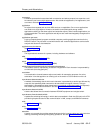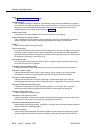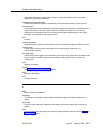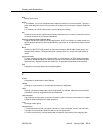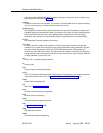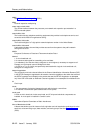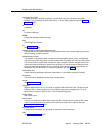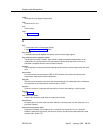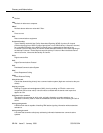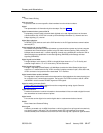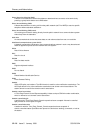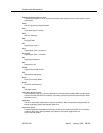
Glossary and Abbreviations
Issue 5 January 1998 GL-13555-230-024
Class of Service (COS)
A feature that uses a number to specify if voice-terminal users can activate the Automatic
Callback, Call Forwarding All Calls, Data Privacy, or Priority Calling features. See also Class of
Restriction (COR).
cm
Centimeter
CM
Connection Manager
CMDR
Centralized Message Detail Recording
CMS
Call Management System
CO
See central office (CO).
common-control switching arrangement (CCSA)
A private telecommunications network using dedicated trunks and a shared switching center for
interconnecting company locations.
communications system
The software-controlled processor complex that interprets dialing pulses, tones, and keyboard
characters and makes the proper connections both within the system and external to the system.
The communications system itself consists of a digital computer, software, storage device, and
carriers with special hardware to perform the connections. A communications system provides
voice and data communications services, including access to public and private networks, for
telephones and data terminals on a customer’s premises. See also switch.
confirmation tone
A tone confirming that feature activation, deactivation, or cancellation has been accepted.
connectivity
The connection of disparate devices within a single system.
console
See attendant console.
contiguous
Adjacent DS0s within one T1 or E1 facility or adjacent TDM or fiber time slots. The first and last
TDM bus, DS0, or fiber time slots are not considered contiguous (no wraparound). For an E1
facility with a D-channel, DS0s 15 and 17 are considered contiguous.
control cabinet
See control carrier.
control carrier
A carrier in a multicarrier cabinet that contains the SPE circuit packs and, unlike an R5r control
carrier, port circuit packs. Also called control cabinet in a single-carrier cabinet. See also
switch-processing element (SPE).
controlled station
A station that is monitored and controlled via a domain-control association.
COR
See Class of Restriction (COR).



